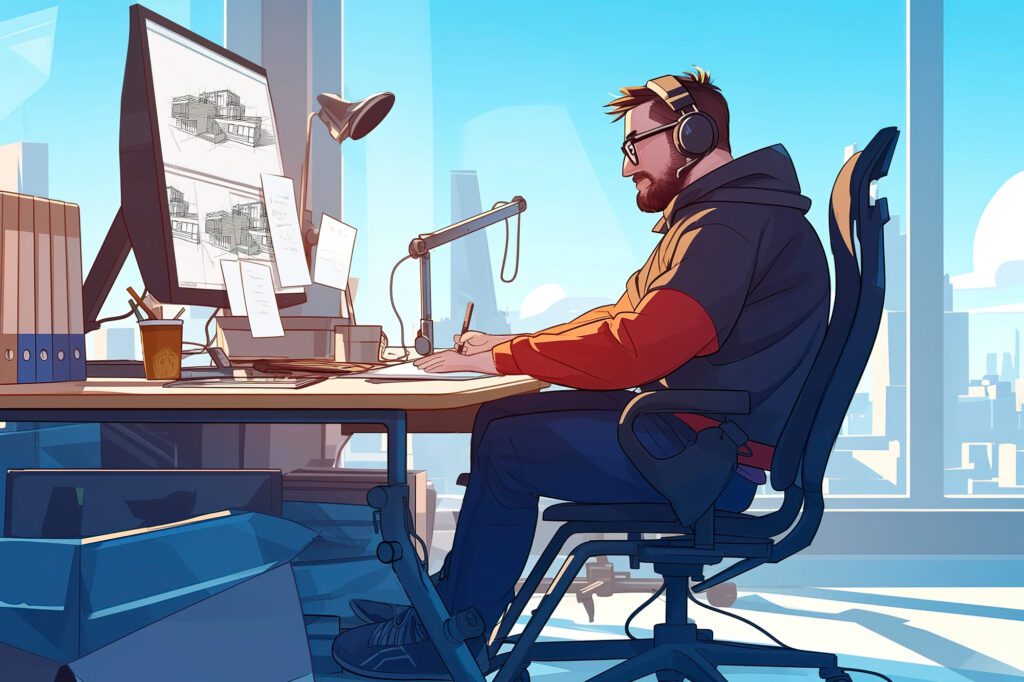If you love storytelling, visual art, and digital creativity, starting a career in animation can be one of the most exciting paths for you. From movies and television to gaming, advertising, and even medical visualization, animators are in high demand across multiple industries.
In this guide, you’ll learn exactly how to start a career in animation — even if you’re starting from scratch. We’ll cover essential skills, software, training options, portfolio building, and how to sell your animation services on platforms like LinkedIn, Upwork, and Fiverr.
What Does an Animator Do?
Animators create motion graphics and visual effects using computer software or by hand-drawing sequences. They work in areas like:
- 2D animation for cartoons and ads
- 3D animation for films, games, and simulations
- Motion graphics for marketing and branding
- Visual effects (VFX) for live-action movies
- Character design and storyboarding
Whether you work at a studio or freelance, a career in animation allows creative freedom and can be highly rewarding.
Read more: How to Write the Perfect Resume in 2025 (Step-by-Step Guide)
Step 1: Understand the Types of Animation Careers

Before choosing your path, it’s important to understand your options. Here are the main fields:
- 2D Animator: Traditional flat drawings, often used in TV shows or explainer videos.
- 3D Animator: Uses software like Blender or Maya to create three-dimensional characters.
- Motion Graphics Designer: Specializes in text and animated graphic effects.
- Character Animator: Focuses on how characters move and express emotions.
- VFX Artist: Adds digital effects to movies, games, or commercials.
- Storyboard Artist: Sketches scenes to plan visual storytelling.
Pick a field that matches your passion and learning style.
Step 2: Learn the Basics of Animation
To begin your career in animation, first study the core principles of animation. These were originally developed by Disney animators and still guide the industry today:
- Squash and stretch
- Anticipation
- Staging
- Straight ahead and pose to pose
- Follow through and overlapping action
- Slow in and slow out
- Arcs
- Secondary action
- Timing
- Exaggeration
- Solid drawing
- Appeal
These concepts help bring characters and objects to life in a natural, believable way.
You can learn these through free resources like:
- YouTube – Alan Becker: Great animation tutorials
- Animator’s Survival Kit (Book): A must-have book
Read more: Top 7 Industries Hiring the Most in 2025 (And How to Get a Job in Them)
Step 3: Learn Industry-Standard Software
To start a career in animation, mastering software is essential. Depending on your specialty, choose the tools accordingly:
For 2D Animation:
- Toon Boom Harmony: Used by many studios
- Adobe Animate: Great for web animations
- Krita: Free drawing software with animation support
For 3D Animation:
For Motion Graphics:
- Adobe After Effects: Essential for visual effects and intros
Choose one tool first and master it before moving to others. Blender is a fantastic starting point as it’s free and widely used.
Step 4: Take Online Courses or Attend Training

You don’t need a university degree to start a career in animation, but formal training can help. Here are great platforms offering courses:
- Coursera: Offers animation foundations and 3D animation courses
- Skillshare: Great for creative software tutorials
- Udemy: Affordable animation and design classes
- Animation Mentor: Specializes in character animation
Many courses include certification and real-world projects to add to your portfolio.
Read more: How to Build a Personal Brand That Gets You Hired in 2025
Step 5: Build a Strong Animation Portfolio
Your portfolio is your most important asset. It proves your ability to tell stories visually and handle animation software.
A good portfolio includes:
- Short demo reels (30–60 seconds)
- Completed character animations
- Motion graphics samples
- Storyboards or concept sketches
- Personal or class projects
Host your work on platforms like:
Place your strongest work at the beginning. Update it regularly.
Step 6: Find Internships or Entry-Level Jobs

Many successful animators started their career in animation with internships or assistant roles.
Places to look:
- Studio career pages
- Animation festivals and forums
- LinkedIn job listings
- Freelance projects on Upwork or Fiverr
Start small—freelance animation gigs help you gain experience and confidence.
Step 7: Build Your Online Presence
Marketing yourself is a must. Here’s how to create a professional presence:
- Create a detailed LinkedIn profile showcasing your animation skills, tools you use, and a link to your portfolio
- Offer your services on Fiverr (e.g., “I will create 2D animated explainer videos”)
- Apply for jobs or gigs through Upwork
- Share your animations on Instagram, YouTube, or TikTok
Use keywords like “freelance animator,” “2D animation,” or “motion graphics designer” to boost visibility.
Step 8: Keep Learning and Adapting
The animation world evolves constantly. New tools, styles, and demands emerge often. Keep learning through:
- YouTube tutorials
- Animation podcasts and blogs
- Following professionals on Twitter or ArtStation
- Attending online events and contests
Always look for ways to improve and update your skillset.
Step 9: Consider Specializing
As your skills grow, you can specialize to stand out and charge more. Options include:
- Character animation
- Motion graphics for branding
- Whiteboard explainer videos
- Game animation
- VFX for music videos
Specialists are more likely to land high-paying freelance gigs and studio contracts.
Step 10: Start Freelancing or Apply to Studios
With a solid portfolio and some experience, you can start earning consistently. Two main paths:
1. Studio Employment
Apply to animation studios, ad agencies, and production houses. Look for roles like:
- Junior Animator
- Motion Designer
- VFX Assistant
- Animation Intern
2. Freelancing
On platforms like Upwork and Fiverr, offer services such as:
- Animated logo intros
- Explainer videos
- Character animation
- YouTube motion graphics
Earnings for freelancers vary, with hourly rates often starting at $25 and exceeding $100 for highly skilled individuals.
How Much Do Animators Earn?

- Junior animators: $25,000–$50,000/year
- Mid-level professionals: $50,000–$80,000/year
- Senior or specialized animators: $80,000–$120,000/year
- Freelancers: Can earn $500–$5000+ per project
As your reputation grows, so does your earning potential.
Final Tips for a Successful Career in Animation
- Practice daily: Animation takes time, patience, and constant improvement.
- Get feedback: Join forums and communities like CGSociety and DeviantArt.
- Collaborate: Join small game or indie film projects to learn teamwork.
- Never stop learning: New tools and trends arrive every year.
Conclusion
A career in animation is not only creatively fulfilling but also full of opportunities. With the right mindset, tools, and practice, you can break into the industry—even without a degree. From online courses and freelancing to working in studios, animation offers a flexible, fun, and high-demand career path.
Start today by picking a software, practicing the basics, and building your portfolio. Your future in animation begins with one frame at a time.


